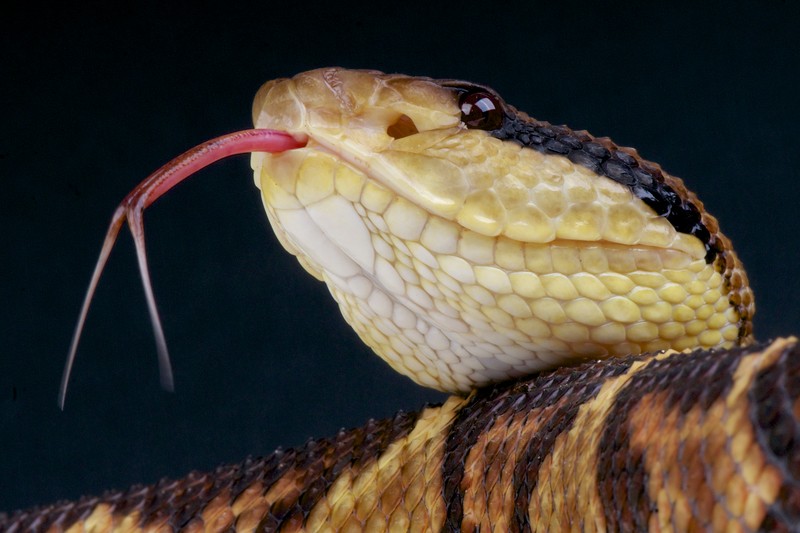Not all snakes are venomous, and not all bites from venomous snakes contain toxins. Thinking you got bit by a venomous snake is different than knowing for a fact that it was a venomous snake. Sure, you'll know soon enough by the pain you're feeling, but it's still important to know the signs.
In order to tell whether or not you have been bitten by a venomous snake, check for any of the following signs:
Snake Bite Symptoms:
Bloody wound discharge
Fang marks or swelling at wound
Extreme localized pain
Diarrhea
Burning sensation
Excessive sweating
Fever
Rapid heart rate
Weakness of body
Loss of muscle coordination
Blurred vision
Dizziness
Nausea and vomiting
Numbness or tingling
Convulsions
Fainting
Despite the myths, there are several steps you should NEVER take when you suspect you’ve been bitten by a venomous snake:
The Don’ts of Snake BitesDon’t apply a suction device or use a snake bite kit if the victim is 1 hour from medical help. Instead, contact medical help and focus on following the first aid instructions listed above.
Don’t use your mouth to extract venom.
Don’t allow the victim to engage in strenuous physical activity. If necessary, carry the person to safety. Otherwise, have them hike out slowly without their pack so they are not over-exerted.
Don’t apply a tourniquet. Restricting superficial blood flow does keep the venom from spreading, which you want to avoid. Concentrated venom will rapidly destroy cells. Allowing it to spread will dilute the toxin and reduce tissue damage.
Don’t apply a cold pack. Cold reduces healthy circulation to the infected area and can result in the loss of limbs. Some experts also believe snake venom increases vulnerability to frostbite.
Don’t let the snake bite victim eat or drink anything, including medication and alcohol, unless okayed by medical staff.
Don’t cut across the bite marks. Because snake fangs are curved, the pocket of venom will not be where expected and will probably have already spread. In addition, many snake bites are considered to be dry, or where there was no toxin released into the victim. Cutting into a dry bite may increase the risk of infection in the area by having an open wound.
Don’t try to capture the snake. Unless the snake is dead, do not waste time attempting to capture the snake. Instead, remember the color, markings, and shape in order to report to facilitate faster treatment.
Of course, all snake bites are different, and there are several species around the world in which you absolutely DO NOT want to wait for symptoms appear.
If you aren’t sure of whether or not a snake is venomous, but have been bitten, you should always play the safe card and start heading for medical attention. It’s better to be embarrassed at the hospital than to be dead in the woods.
If you liked this article and would like to learn more about this topic, there's more information readily available at Wild Backpacker.

Ashley Olson
Good thing she went right in!!!
Is voting for it one of the symptoms?